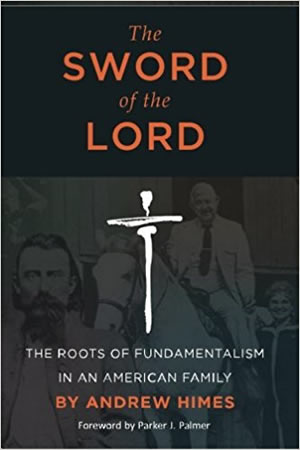
The Sword of the Lord
Description : Andrew Himes is the first grandson of the man who has been dubbed “the mightiest pen of the 20th century,” John R. Rice. Born of Rice’s eldest daughter Mary Lloys, Himes was seventeen when he left fundamentalism for the communistic ideals of Karl Marx and Mao Zedong. Himes felt disillusioned with God, because he viewed God as “an elderly white male who lived in a golden city beyond the sky, who apparently liked white people better than black people, who ordered women to be subservient to men, who supported the war aims of the United States in Vietnam,” and who sent most people to a literal lake of fire (276). Forty-four years after this decision, Himes has seen the emptiness of communism and has learned to appreciate his fundamentalist heritage. This appreciation is what drives this new 316-page book.
The book is divided into five parts. The first is entitled “Why We Care About Fundamentalism?” and relates the author’s experience of his grandfather’s funeral and suggests how fundamentalism may become relevant or irrelevant in the days ahead. The second is called “Revolution, Slavery, and War,” where the author describes the socio-cultural and theological background of southern fundamentalism. Here especially, the author takes pains to show how southern racial tensions and their “theological” justification were the sad result of America’s abuse of slavery. The third and fourth parts rehearse familiar fundamentalist history (i.e., chapters about Billy Sunday, “The Fundamentals,” and the struggle against Modernism) and are basically a family “insider’s” take on the development, growth, and later “uneasy conscience” (to use one of the chapter titles) of the movement in thetwentieth century. The author’s last section is called “Revisiting the Fundamentals.”
This book should be considered valuable for a number of reasons. First, the author takes an honest look at the racism that sometimes characterized certain expressions of fundamentalism. He argues that such expressions still exist in some quarters of fundamentalism, and he provides helpful reflection for those who would distance themselves from it.
Second, he describes the national disenchantment with fundamentalism which followed a period of its development and growth at the turn of the 20th century. Understanding this phase of fundamentalist history is especially important in understanding “the uneasy conscience” that has sometimes described the movement; the impulse of a “Christian America,” if it ever existed, was starkly challenged by the rise of modernism and evolution.
Third, Himes provides a detailed account of the rise of John R. Rice as a prominent pastor, evangelist, and writer. The reader learns of key relationships being forged and lost, mostly over the issue of separation, but sometimes over unfortunate racial issues. Himes is knowledgeable (both by experience and research—there is a wealth of resources and notes listed in the back), articulate, passionate, and easy to read.
Although readers may question some of Himes’ theological propositions, particularly those made in the last few chapters (i.e., Himes prefers to call the “Kingdom” the “Kindom,” p. 282), few will doubt the valuable contribution this book makes to understanding what the subtitle suggests: “The Roots of Fundamentalism in an American Family.”


